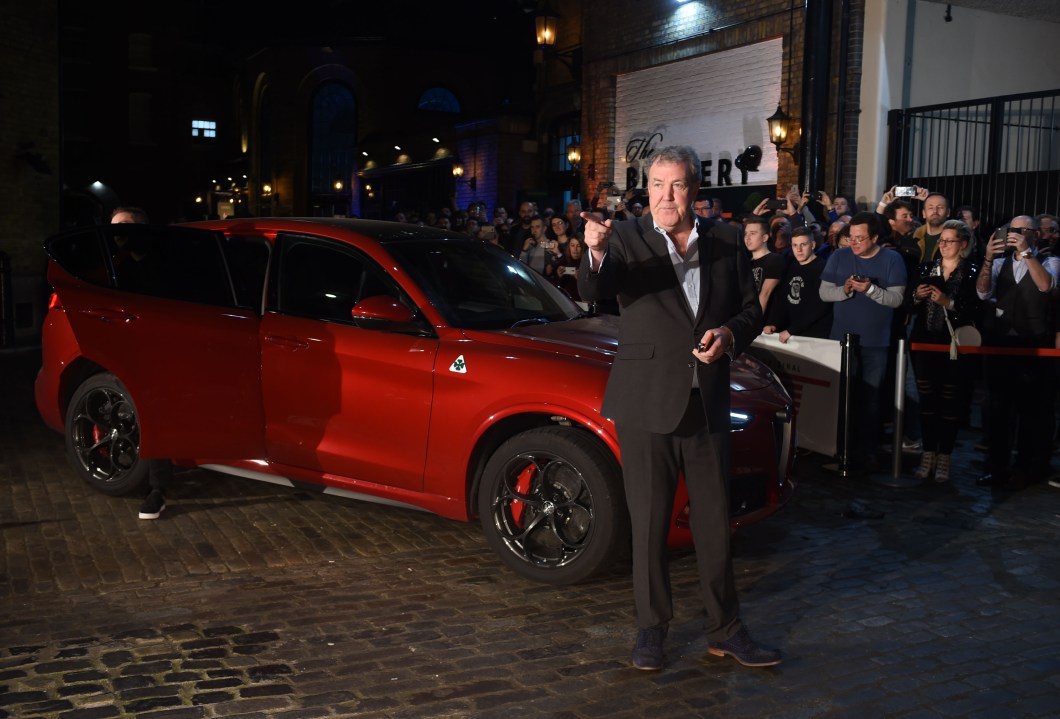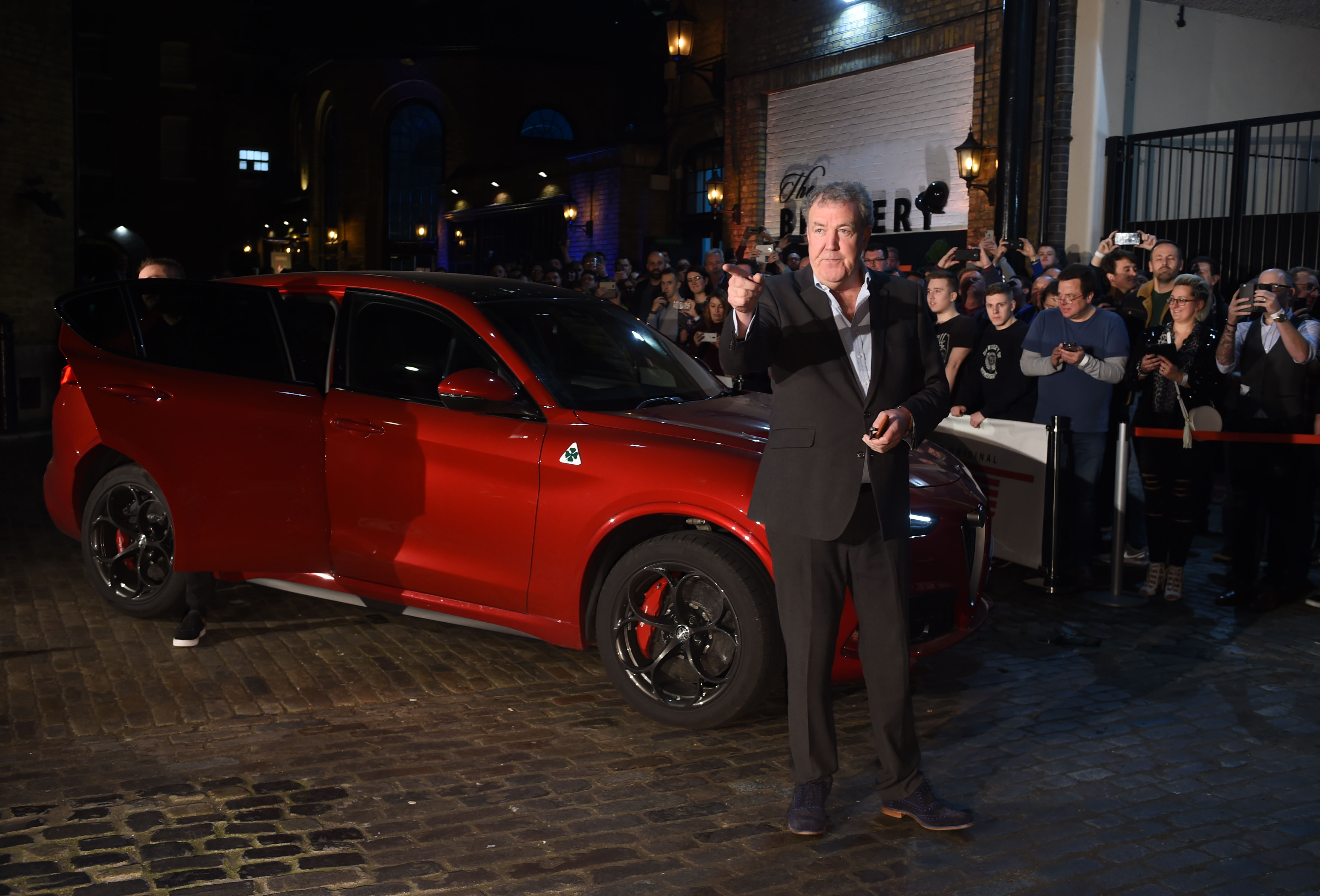If Jeremy Clarkson had lived through the Wars of the Roses he would have been neither a Yorkist nor a Lancastrian. He would have lurked in his castle, reassuring each side of his unswerving loyalty, till the moment came when Richard III lost his crown. At this point Clarkson would make his position absolutely clear: he’d been a diehard Lancastrian all along.
How do I know this? Because I’ve just seen ‘Seamen’ (The Grand Tour) in which Clarkson reveals himself as an ardent believer in climate change. He mentions it about half a dozen times in one episode – almost to the point where you wonder if he isn’t taking the mickey.
Perhaps he is. It wouldn’t at all surprise me if Amazon Prime, as part of some greenwashing, virtue-signalling strategy, had a quiet word with him: ‘Look Jeremy -we’re more than happy to go on spending squillions of dollars sending you three boys round the world in gas-guzzling, fume-belching, planet-destroying motorised behemoths. But please, pretty please, just for us – can you make out like you’re bothered about climate change?’
Some of you may admire the delicious cynicism of Clarkson’s swerve. But to me, it represents a betrayal of the millions of us who have been loyally following his car programmes for nearly thirty years. Either you champion throbbing V8s or you bleat about the environment. But to do both strikes me as a case of ‘pro-having-cake, pro-eating-it’ double standards which would make even the Prime Minister blush.
What particularly brought this home was watching the final episode of Grand Tour season three, as poetic and moving a tribute to the joy of motoring as I have ever seen. For all their frivolity, flippancy and silliness, Clarkson, James May and Richard Hammond are high octane ‘petrolheads,’ more capable than perhaps any trio on earth of explaining – and showing – why cars matter. This is why Top Gear ceased to be worth watching once they’d gone.
It was one of the documentary specials that Clarkson does so well. Dedicated to the history of Ford motor cars, it detailed the rise of the Cortina in the sixties to the demise of the once hugely popular Mondeo in 2019. I hadn’t appreciated just how iconic the Cortina was: almost everyone in the studio audience had a Dad who’d owned one, as did most of the film crew, as did Clarkson and May.
They described – neck-hairs pricking at the pungency of the memory – just how thrilling it had been, the day when they first glimpsed Dad’s new motor. Clarkson was especially pleased because his father had ordered the top-of-the-range model, the one with the E badge – signifying Executive. Ford Cortinas were shamelessly stratified, so it was instantly clear at a glance just how successful a person you were, based on the model you could afford.
Another of Ford’s strategies, starting with the Cortina (but done even more successfully with their initially uninspiring Sierra) was to make their cars sexy, by producing sporty models which won lots of motor races. This was how the Sierra RS500 Cosworth came to be, with its distinctive rear spoiler and its 150mph top speed, making it hugely popular with spivs who couldn’t quite run to a Ferrari. But its performance was ultimately its undoing: so often was the (unfortunately easy-to-break-into) car stolen by joy-riders that it effectively become impossible to insure.
Then, about 15 years ago, things started to go horribly wrong. Instead of wanting cars that were fun to drive, with a bit of poke under the bonnet, the new generation of millennial fuddy-duddies decided they needed space, safety and fuel efficiency. Blobby people carriers replaced saloons and the romance of motoring never really recovered. Gone too – you got the slight impression – was the trio’s raison d’etre, which is why they’ve ended the Grand Tour’s Top Gear-ish format and now make adventure specials instead.
I like the adventure specials very much. Even though they’re probably a lot more scripted and contrived than they look, the boys have become very good over the years at delivering politically incorrect banter – their puerile jokes and the art of getting themselves up shit creek without a paddle are particularly impressive, given the exotic locations.
The one where they travel from Cambodia to the Mekong Delta in their preferred variety of boat doesn’t disappoint. May chooses a slow, elegant, polished wood Thirties river cruiser; Hammond, a Miami speedboat straight out of a porn movie; Clarkson, a PBR (Patrol Boat, Riverine) which they used in the Vietnam War (and which the Martin Sheen character heads to meet Colonel Kurtz on in Apocalypse Now). This last boat was a replica – there are no originals in existence, so Clarkson had to spend £100,000 commissioning one, which I suppose you can do when you’ve got Amazon Prime chucking money your way.
Clarkson’s choice of transport enables him to indulge his military history buffery. (Remember that brilliant documentary he once did about his ex-wife’s father, who won a particularly spectacular VC at Arnhem?) He shows off what those PBRs could do: stopping abruptly in no more than their own length, powering down the Mekong, close to the riverbank to frustrate snipers. He recounts an incident from the 1968 Tet Offensive, when a number of PBRs came to the rescue of trapped GIs and a stranded nurse.
But the appeal of these shows is transgressive: blokes behaving like arses, saying the things you’re not allowed to say anymore, doing the outrageously stupid stuff we’d all like to be doing if only we didn’t have proper jobs. Jeremy Clarkson whining on about climate change though, is not transgressive and it’s not on brand.
I still think he’s one of the most entertaining acts anywhere on television. But I’ve lost my respect for him because real blokes don’t desert their mates’ causes when it becomes uncomfortable or unfashionable. They stick with it to the bitter end, even if it means going down with the ship – especially when it’s ‘the cause’ that paid for that bloody great ship (and car collection, and Cotswold farm) in the first place.








Comments